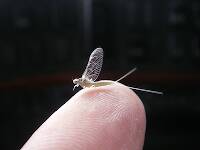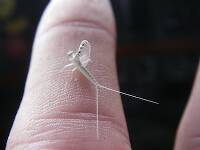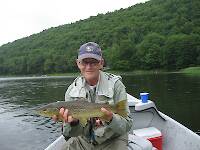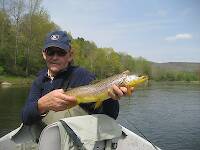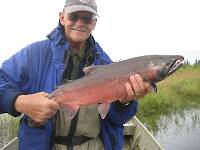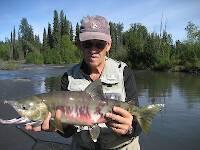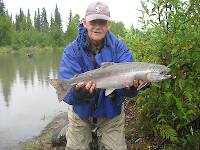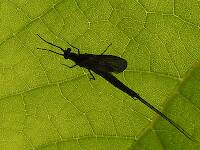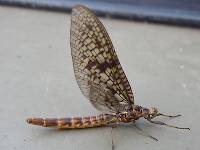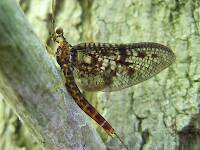
Blue-winged Olives
Baetis
Tiny Baetis mayflies are perhaps the most commonly encountered and imitated by anglers on all American trout streams due to their great abundance, widespread distribution, and trout-friendly emergence habits.
Featured on the forum

This one was surprisingly straightforward to identify. The lack of a sclerite at the base of the lateral hump narrows the field quite a bit, and the other options followed fairly obvious characteristics to Clostoeca, which only has one species, Clostoeca disjuncta.

Troutnut is a project started in 2003 by salmonid ecologist Jason "Troutnut" Neuswanger to help anglers and
fly tyers unabashedly embrace the entomological side of the sport. Learn more about Troutnut or
support the project for an enhanced experience here.
By Troutnut on June 27th, 2019
Having fished the previous day from our campground upstream to the park boundary, we decided on this day to work our way downstream from camp instead toward the lower end of our meadow. The day started fairly well around 10:00 am when I got an aggressive strike from a deep pool and landed a fish with its gullet packed with earthworms and cranefly larvae:
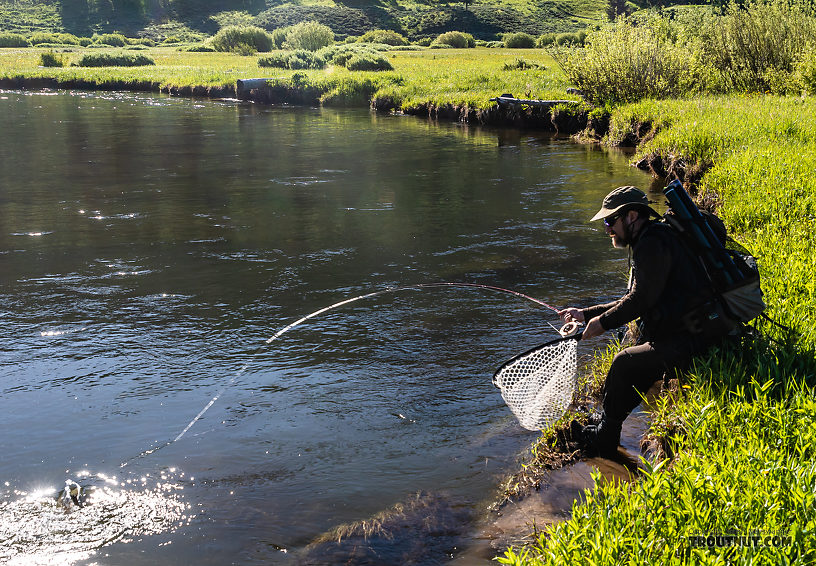
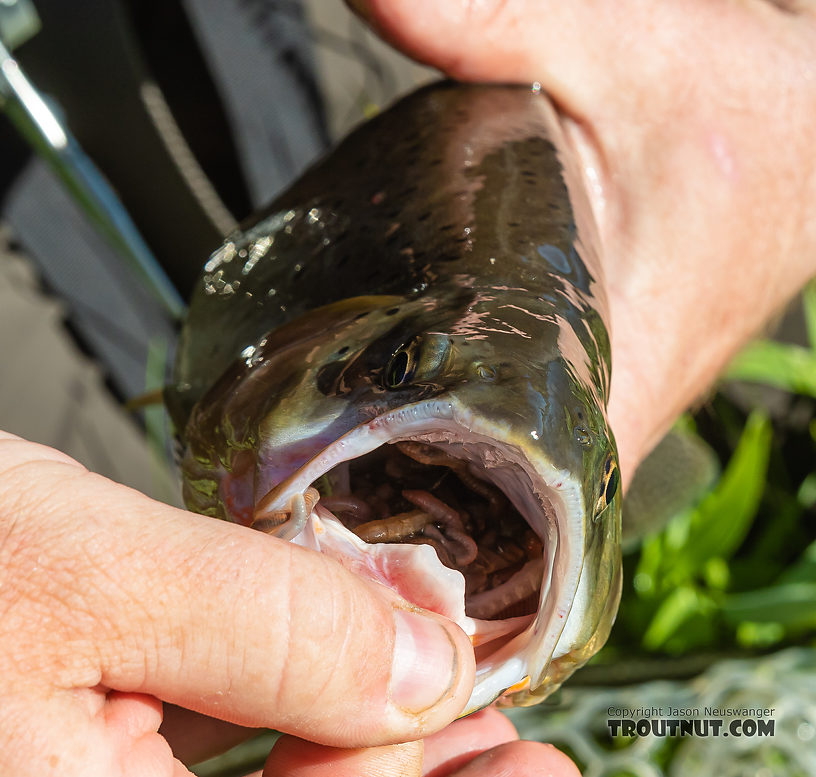
In the year before I took up flyfishing I became an increasingly avid and technically serious worm dunker (to the extent that it's possible), but as far as I know I never caught a trout that was actually stuffing itself with earthworms until now. It made perfect sense here, given the location toward the tail end of a long bend where the river was eating into the silty meadow and the bank was all soil.
The fishing for the rest of the day was pretty slow, as we only hit one or two spots with good action. However, the sunny weather with scattered dramatic clouds kept me focused on my camera as much as the water, each scene more jaw-dropping than the last:

We worked our way to the bottom of our meadow, walked back to camp for a late lunch, and went out for the evening to re-hash the upstream water we fished the previous day. It was slower this time.


In the year before I took up flyfishing I became an increasingly avid and technically serious worm dunker (to the extent that it's possible), but as far as I know I never caught a trout that was actually stuffing itself with earthworms until now. It made perfect sense here, given the location toward the tail end of a long bend where the river was eating into the silty meadow and the bank was all soil.
The fishing for the rest of the day was pretty slow, as we only hit one or two spots with good action. However, the sunny weather with scattered dramatic clouds kept me focused on my camera as much as the water, each scene more jaw-dropping than the last:

We worked our way to the bottom of our meadow, walked back to camp for a late lunch, and went out for the evening to re-hash the upstream water we fished the previous day. It was slower this time.
Photos by Troutnut from Slough Creek in Wyoming
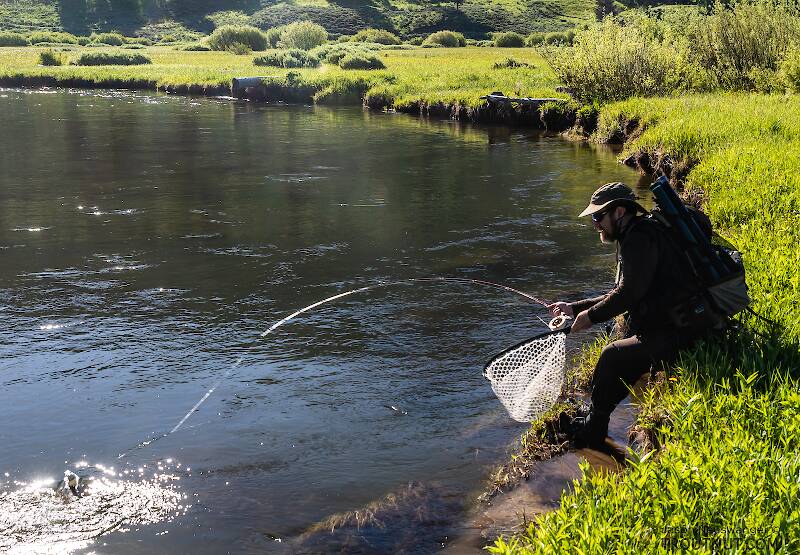
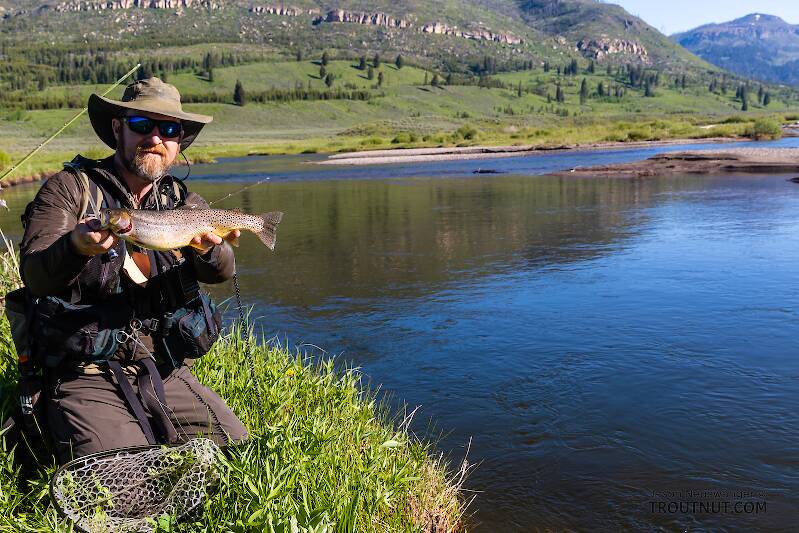
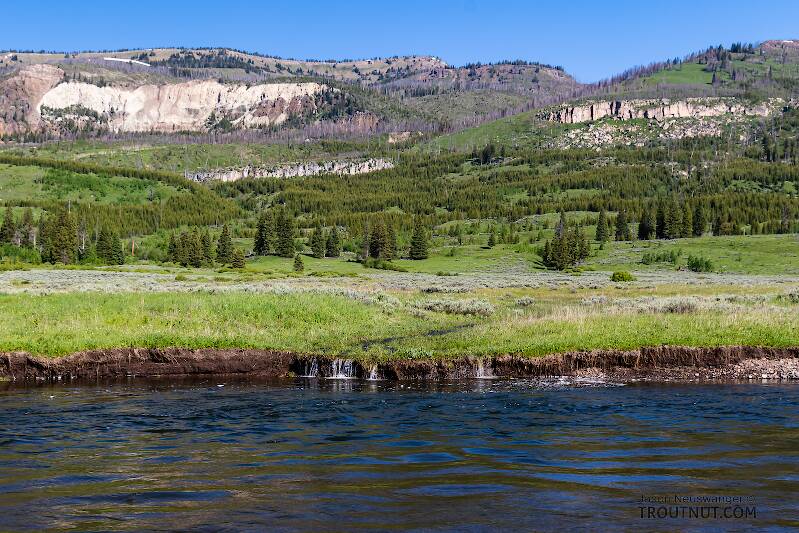






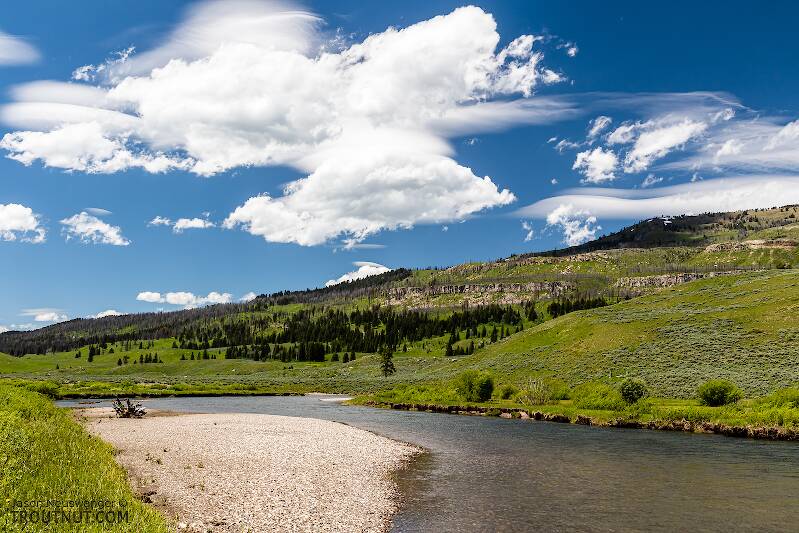
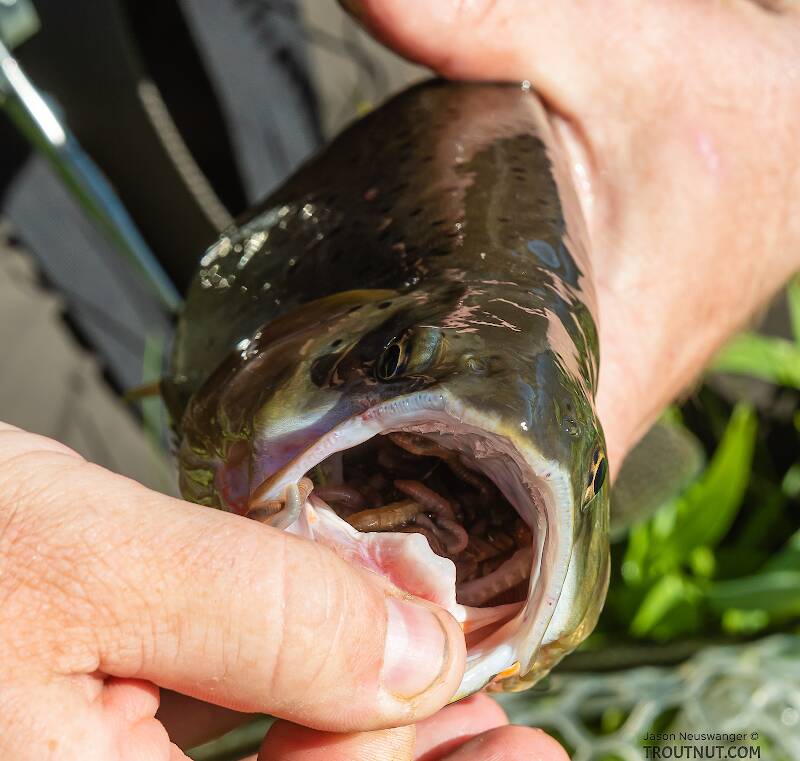
Quick Reply
Related Discussions
Topic
Replies
Last Reply
Re: Salmonfly question for you westerners
In the Stonefly Species Pteronarcys californica by Troutnut
In the Stonefly Species Pteronarcys californica by Troutnut
7
Jun 4, 2016
by Chipper
by Chipper
10
Jul 27, 2008
by Phillyfired
by Phillyfired
3
Aug 4, 2007
by Martinlf
by Martinlf


